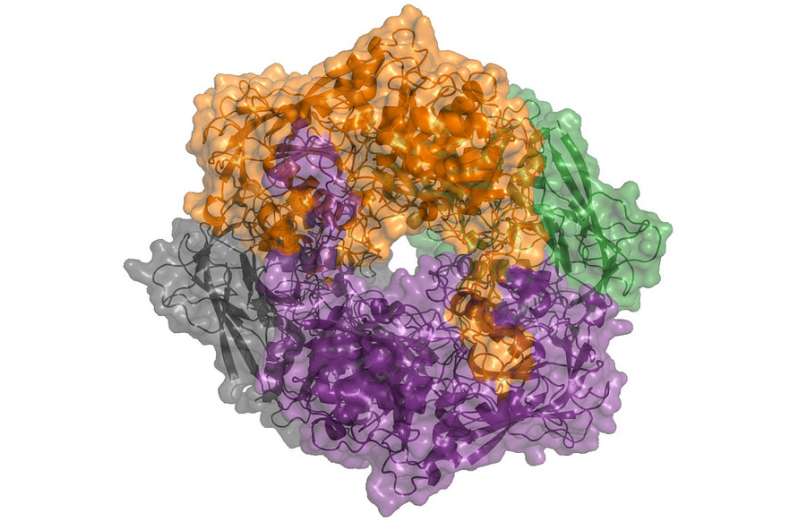Closer look at microorganism provides insight on carbon cycling

Some of the world's tiniest organisms may have a large impact on climate change. Researchers from the U.S. Department of Energy's Argonne National Laboratory and the University of Tennessee found that microorganisms called archaea living in marine sediments use completely novel enzymes to break down organic matter into carbon dioxide.
These single-celled archaea eat organic carbon in marine sediments. Enzymes in the archaea break down large carbon molecules into smaller units. This process releases carbon dioxide and methane into the water and eventually, into the atmosphere.
However, as the temperature of oceans and bodies of freshwater increases, this carbon cycling process accelerates. The temperature at the bottom of the ocean, for example, is approximately two to four degrees Celsius (35 to 39 degrees Fahrenheit). According to Andrzej Joachimiak, Argonne distinguished fellow and director of the Structural Biology Center, if the ocean temperature rises one or two degrees, the rate of carbon release might increase.
"About 40 percent of Earth's organic carbon is stored in marine sediments," Joachimiak said. "An increase in temperature and acceleration of the carbon cycling process in these sediments is a major concern."
Joachimiak said scientists are uncertain about how fast archaea process carbon and whether the release is accelerating. Once researchers have these statistics, they may find ways to better predict the environment's response to a changing climate.
This understanding starts at the molecular level. Using resources at the Advanced Photon Source, a DOE Office of Science User Facility, and the Advanced Protein Characterization Facility, the research team produced and crystallized bathyaminopeptidase, or BAP – one of the enzymes found in the archaea – to look into its structure and observe how it operates. They found that BAP plays an important role in breaking down proteins and, consequently, the turnover of atmospheric carbon.
The biggest challenge the researchers had was determining BAP's function, because no previously cultured organisms shared a close ancestry. These types of organisms are considered microbial "dark matter" because their physiologies are unknown and they have never been grown in a lab.
And because it is difficult to study their physiologies, scientists cannot determine their precise impact on ecosystems and major global events. For example, BAP was found to be structurally similar to the known amino acid ester hydrolase, but had evolved to serve an entirely different function.
Despite this challenge, the researchers demonstrated that detailed characterization of enzymes from microbial dark matter can be done without first having to grow those organisms in the lab, which may be difficult or time-consuming.
"Being able to characterize proteins directly from microbial dark matter, without requiring that they first be grown in a lab, opens up limitless possibilities for discovering novel functions of these strange organisms that control the breakdown of carbon in marine sediments," said Karen Lloyd, assistant professor in the department of microbiology at the University of Tennessee.
According to Karolina Michalska, assistant protein crystallographer in the Biosciences Division, it was originally believed that bacteria were the primary players in the degradation of proteins in marine sediments. But the research shows that archaea are also involved in the process.
"It seems that archaea have a larger role in organic carbon, or protein, degradation than we previously realized," Michalska said.
The study, "New aminopeptidase from 'microbial dark matter' archaeon," was published June 10 in The FASEB Journal.
More information: "New aminopeptidase from "microbial dark matter" archaeon." FASEB J fj.15-272906; published ahead of print June 10, 2015, DOI: 10.1096/fj.15-272906
Journal information: FASEB Journal
Provided by Argonne National Laboratory



















